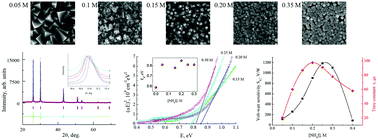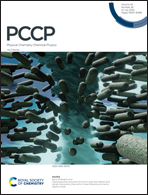The influence of iodide addition on the composition, morphology, crystal structure, and semiconductor and photoelectric properties of PbS films
Abstract
The concentration conditions for the deposition of lead sulfide and hydroxide in a citrate-ammonia reaction system by varying the pH value and the concentration of the ammonium iodide dopant are calculated. Kinetic studies of the process of conversion of lead salt into sulfide by varying the concentration of NH4I in solution within the range of 0.0–0.4 M show an inhibitory effect of ammonium iodide, which reduces the constant of the effective rate of the conversion process by almost 20 times. Thin films of lead sulfide with a thickness of 100 to 650 nm are synthesized by chemical bath deposition in the presence of NH4I on sitall and glass substrates. The introduction of NH4I into the reaction mixture decreases the size of crystallites forming the films and increases the fraction of nanoparticles to 17%. The films deposited during 90 min contain 48.5–51.7 at% of lead, 47.4–47.9 at% of sulfur, and up to 3.7 at% of iodine; the content of iodine can reach 17.1 at% in the initial period of deposition (after 20 min of deposition). The calculated fractal dimension of the surface of the iodine-doped PbS(I) films (Dc = 2.04–2.14) corresponds to the process of film formation by the cluster–cluster aggregation mechanism with small sticking probability (reaction-limited cluster aggregation model (RLCA)). According to the X-ray diffraction data, the PbS(I) films have a cubic structure of the NaCl (B1) type; an increase in the concentration of NH4I in the solution results in an increase in the lattice parameter from 0.59315(1) to 0.59442(3) nm, which is probably due to the substitution of sulfur ions for iodine ones. According to optical studies, the introduction of ammonium iodide into the reaction mixture leads to a shift of the absorption edge to the high-energy region and the appearance of an additional (impurity) band. The PbS films deposited in the presence of NH4I do not require additional photosensitization operations and show a relatively high volt–watt sensitivity to IR radiation at anomalously small values of the time constant.



 Please wait while we load your content...
Please wait while we load your content...